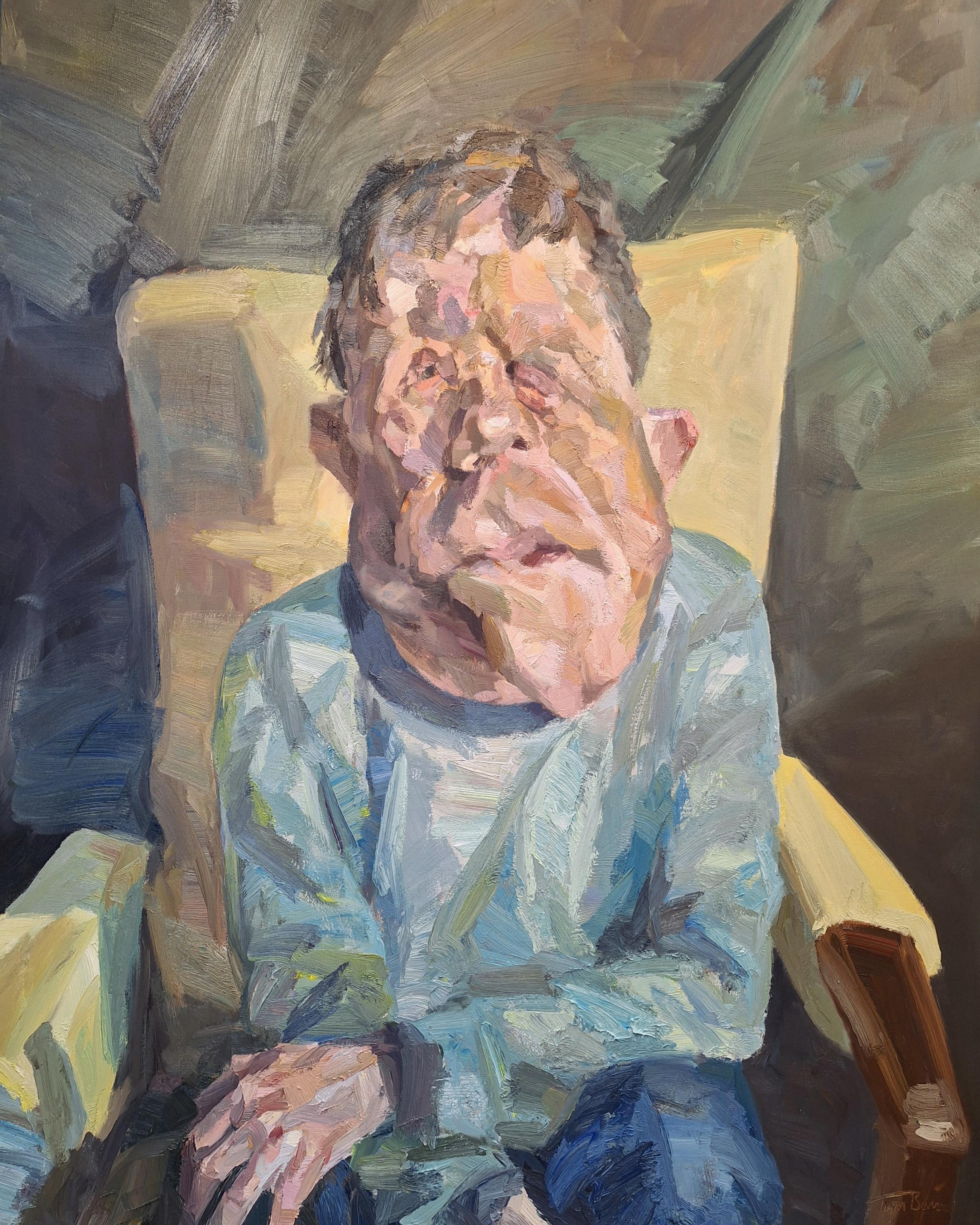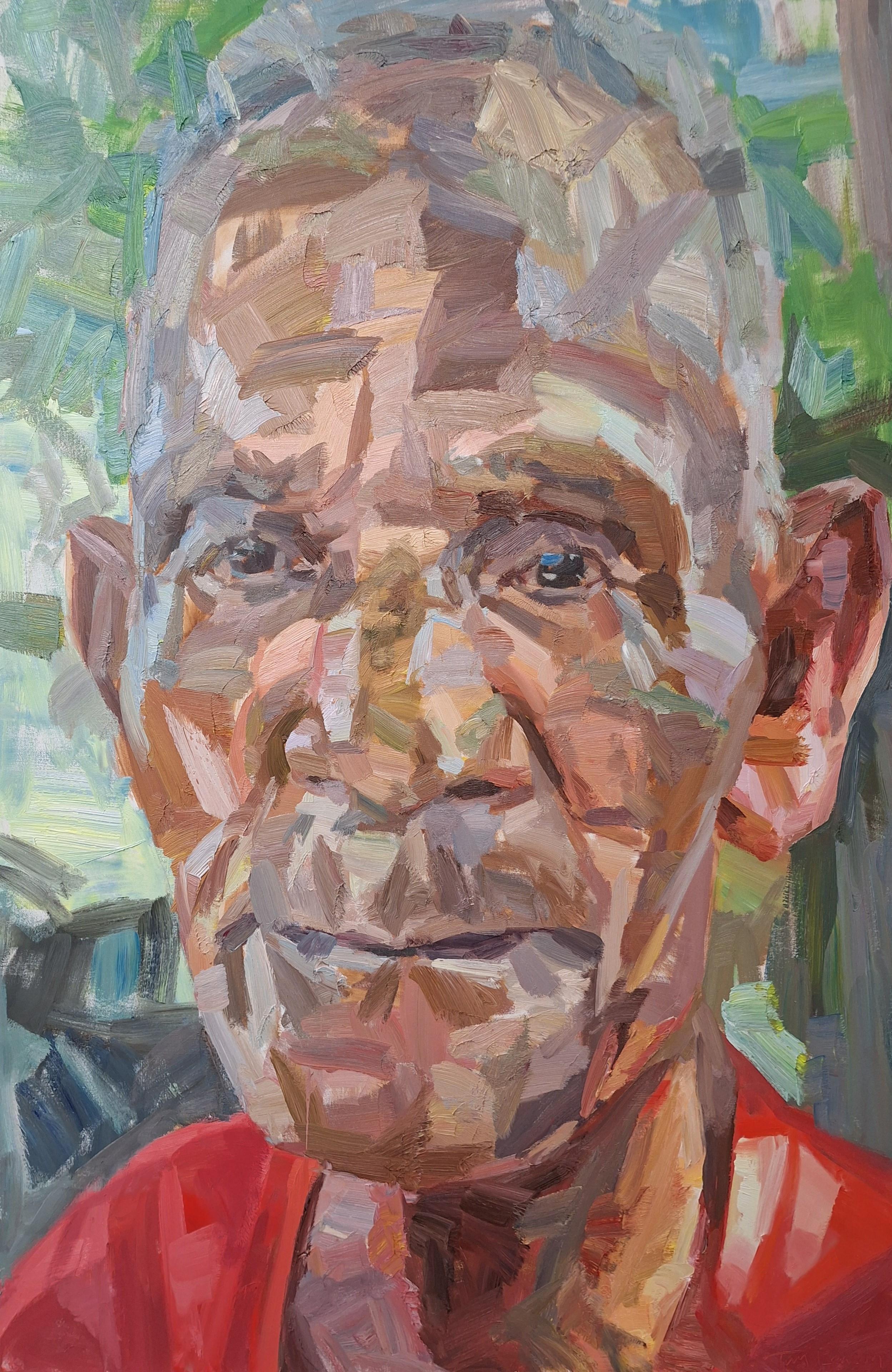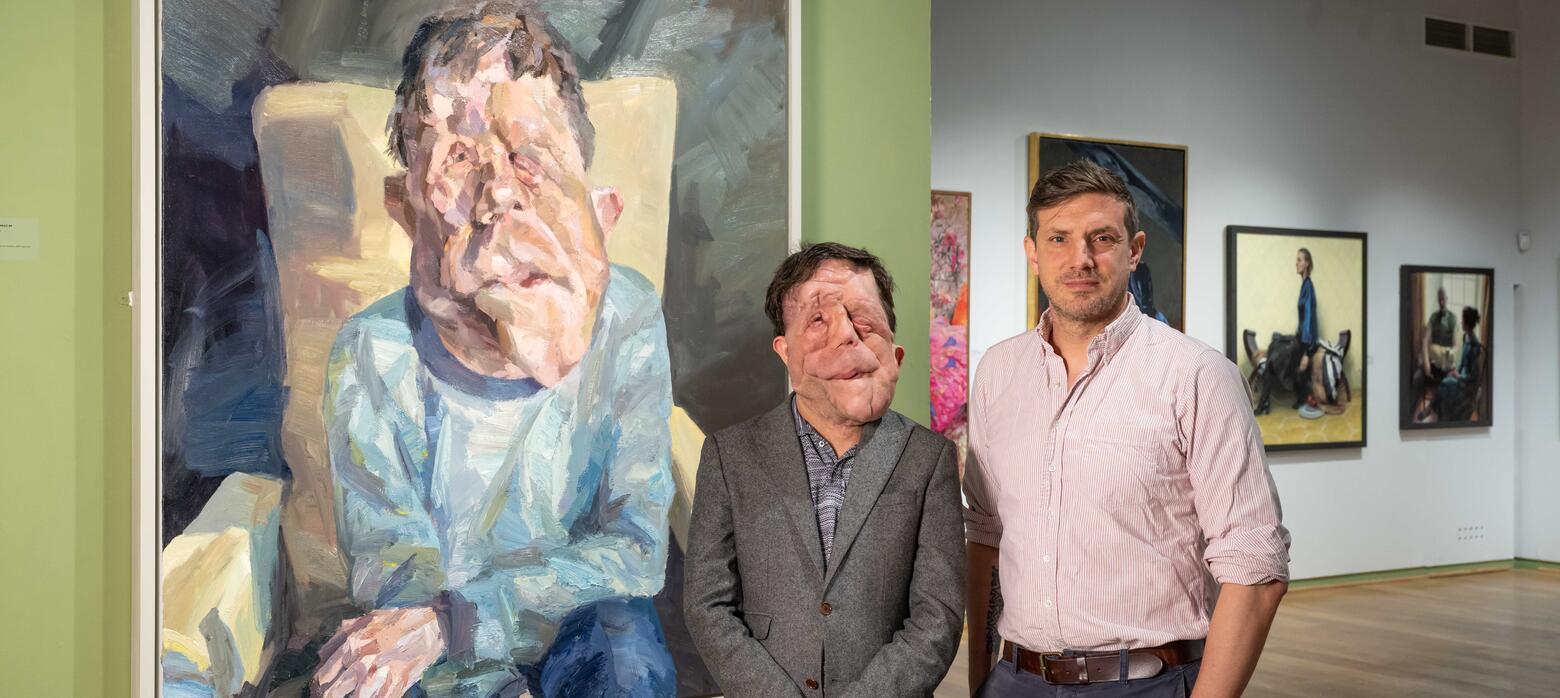Raising Awareness: In Conversation with Tim Benson RP
/ Royal Society of Portrait Painters
This year, International Face Equality Week and Mental Health Awareness Week coincide.
Both events hold themes that are incredibly relevant for both the Royal Society of Portrait Painters and the Federation of British Artists.
This year's theme for Mental Health Awareness week is community, to celebrate the power and importance of having a safe and welcoming community, and how support and inclusion play a vital part in our mental wellbeing. Face Equality Week this year explores the theme 'My Face is a Masterpiece', exploring identity and representation.
To mark the week, we have had the wonderful opportunity to speak to acclaimed portrait artist Tim Benson RP, who shared his thoughts around facial differences, creativity for mental health and his hopes for the future of portraiture.
Tim will be in the galleries with Adam Pearson on Saturday 17 May, to discuss the experience of sitting for his portrait, which was exhibited at the National Portrait Gallery in 2024 as part of the Herbert Smith Freehills Portrait Award. Joined by representatives from Face Equality International, the conversation will explore how portraiture and storytelling can challenge perceptions of beauty and identity, celebrating the uniqueness of every face.

Do you find portraiture has a particular emotional impact, either on you or your sitter?
That's quite a difficult question to answer, because it's hard to know what the metric is for the discerning emotional impact. I think just as a consequence of a direct human experience, a human interaction with somebody over an extended period of time, and having conversations and getting to know somebody through conversation. I think it does have an emotional impact, hopefully both ways. It extends both to myself and the sitter, and the people that I work with are people that I am personally very interested in, whose stories I find to be important, which is one of the reasons I'm painting them. So that normally leads me in a certain direction and I am impacted emotionally by that, which I think massively plays into the outcome within the painting, and I hope that is symbiotic and they feel that too.
The fact that I am engaged with them hopefully gives them a positive emotional experience as well. For example, with myself and Adam, we were talking most of the time I was doing the portrait. We had a lot of similar cultural references that we were referring to, and we just got on really, really well. I think that emotionally for both of us, it was a uniformly positive experience. But I think that that can extrapolate to the wider picture as well. Like most of the people I paint, they know my work and really like it and respond to it, so thereby come to my studio on that basis. We're not strangers in a way. I think for a lot of portrait painters, it's just straight commissions, and very often it's much more pragmatic and not necessarily quite as emotive.
I am painting using a very traditional medium, which is portrait painting, to build awareness around something that has not very often been talked about.
From your perspective and experiences, how can art - particularly portraiture - impact the way people perceive beauty, identity and differences?
I think that is one of the main thrusts of the work that I do, I try to challenge traditional stereotypes of beauty. I have worked with other people with facial differences before, and it's something in itself that they are being painted, which wouldn't necessarily have been the case historically. Portraiture has definitely historically been the sort of preserve of the moneyed few who can afford to. It has been a form of social elevation and a chronicle of wealth and success. Whereas I think these days, it is more and more increasingly being used to engender social change, to build awareness around various social issues. I think that it is a very powerful way of disseminating those messages. So certainly in the case of painting Adam, that was very explicit. I specifically wanted to paint Adam, he has a very pronounced facial difference and I wanted to put that into the public domain. I wanted to bring that to people's attention to say 'Yes, look, I am painting using a very traditional medium, which is portrait painting, to build awareness around something that has not very often been talked about'.
With my other work too, there are paintings of people for example, who have survived Ebola in West Africa, using painting to tell their stories as well. It is basically looking at social health and geopolitical issues through the lens of portrait painting, which is something that hasn't been traditionally done very much.

International Face Equality Week and Mental Health Awareness Week (12-19) coincide this year. In your experience, how can creativity and expression support mental health?
I can't speak for the sitters and how it helps support their mental health, because I don't always know what their mental health situation is, but certainly from my own point of view, it is fundamental to my mental well being. I don't know whether it's a consequence of the work that I do and the job that I've chosen, being isolated and highly demanding and rigorous, and it makes me quite introspective I suppose. But certainly over the years, I've suffered with mental health issues like depression and anxiety. I don't know whether that is purely physiological, psychological, to do with the job I have chosen or all of the above, but definitely within the actual process of painting, that brings a sort of salvation as well. It really helps me to process life and to process the world around me. It is very, very fundamental to my mental well being, to be able to get into the studio and do something that's basically with my hand, something that's analog and for a brief moment in time to be able to completely immerse myself in something which takes me out of my social context. And I think that is very important. It really shuts your brain off, and it's the only situation where I can be completely thoughtless. I don't actually think anything which is brilliant. I'm not constantly processing, I'm just doing as opposed to living in my head. It sounds cheesy but I'm living in the moment, and I think that is very important for me, and something we don't do very much of in contemporary society.
From my point of view, [art] is fundamental to my wellbeing.
What would you like people to take away from both your talk, and portrait with Adam Pearson?
I want people to see that Adam is just a lovely guy, just a really, highly intelligent, articulate, funny man, and that just because he has a facial difference it doesn't mean that he's any different to anybody else or the rest of us. With the process of the painting, within ten minutes of meeting Adam for the first time, I honestly didn't notice his facial difference. Conversation, and just getting on with each other became a massive leveler in a sense, I wasn't looking I was just looking beyond. I didn't see the facial difference that apparently a lot of people think defines him. He is so much more than his face, as he is so eager for people to realise. I'm hoping the talk, and I hate to have to say it, humanises him in people's eyes. It's amazing how scared people are of people who are different, whether that is a facial difference or any kind of difference.
My main hope through the talk and painting is that we are putting something into a gallery or an art context, that wouldn't normally get to have that sort of exposure in that particular context. And so hopefully changing the world of portraiture for the better, and the world of art so we're not afraid to look, to see and to engage.
The Royal Society of Portrait Painters Annual Exhibition is open in the galleries until Saturday 17 May 2025.
Talk | My Face is a Masterpiece - Painting Adam Pearson
See Tim Benson RP and Adam Pearson in conversation at Mall Galleries, on Saturday 17 May 2025.

